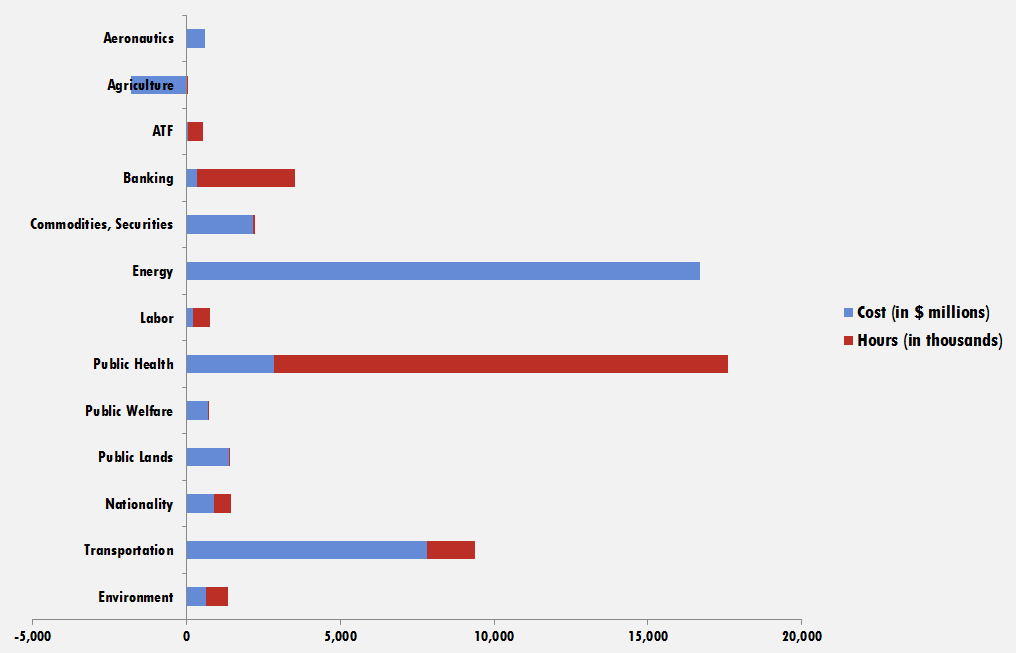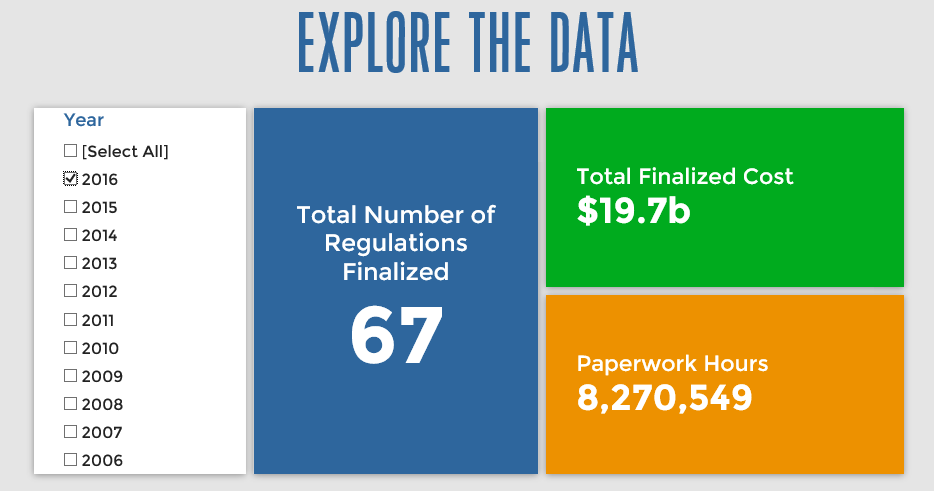Week in Regulation
March 21, 2016
$160 Million in Regulatory Costs
It was a mixed bag for regulation this week, as new final rules added $83 million in annual costs, but an energy efficiency proposal cut $93 million from the ledger. Net annual costs edged up by $160 million and paperwork grew by more than 930,000 hours. A package of transportation regulations and the energy efficiency proposal led the week. The per capita regulatory burden for 2016 is $100.
Regulatory Toplines
- New Proposed Rules: 44
- New Final Rules: 66
- 2016 Total Pages of Regulation: 14,946
- 2016 Final Rules: $19.7 Billion
- 2016 Proposed Rules: $12.6 Billion
The American Action Forum (AAF) has catalogued regulations according to their codification in the Code of Federal Regulations (CFR). The CFR is organized into 50 titles, with each title corresponding to an industry or part of government. This snapshot will help to determine which sectors of the economy receive the highest number of regulatory actions.
In a rare feat, the Department of Energy (DOE) proposed an efficiency rule for lamps that claims to cut long-term costs by $1.4 billion, while providing $481 million in additional annual benefits. Assuming the estimates are correct, these cost savings result from the longer product life of new lamps, limiting the need for additional replacements, and the lower purchase price of more efficient lamps. Typically, newer, more efficient products, have higher up-front purchase prices. For comparison, the average DOE final rule since 2009 has imposed $3.4 billion in long-term costs.
The Department of Transportation proposed the priciest rule of the week, a measure to implement the “Highway Safety Program.” Total costs for the rule could top $650 million, although annual costs are a modest $19 million.
EPA proposed a rule to improve chemical process safety and increase public awareness of chemical hazards. The proposal aims to curtail the possibility of fatal chemical explosions, like the one that occurred in West, Texas in 2013 that killed 15 people. Annual costs of the regulation are approximately $160 million, with $275 million in benefits.
Affordable Care Act
Since passage, based on total lifetime costs of the regulations, the Affordable Care Act has imposed costs of $52.2 billion in state and private-sector burdens and 186.7 million annual paperwork hours (170.9 million from final rules).
Dodd-Frank
Click here to view the total estimated revised costs from Dodd-Frank; since passage, the legislation has produced more than 76.5 million paperwork burden hours and imposed $39.2 billion in direct compliance costs.
Total Burdens
Since January 1, the federal government has published $32.4 billion in compliance costs ($19.7 billion in final rules) and has imposed 22.6 million in net paperwork burden hours (8.2 million from final rules). Click below for the latest Reg Rodeo findings.












